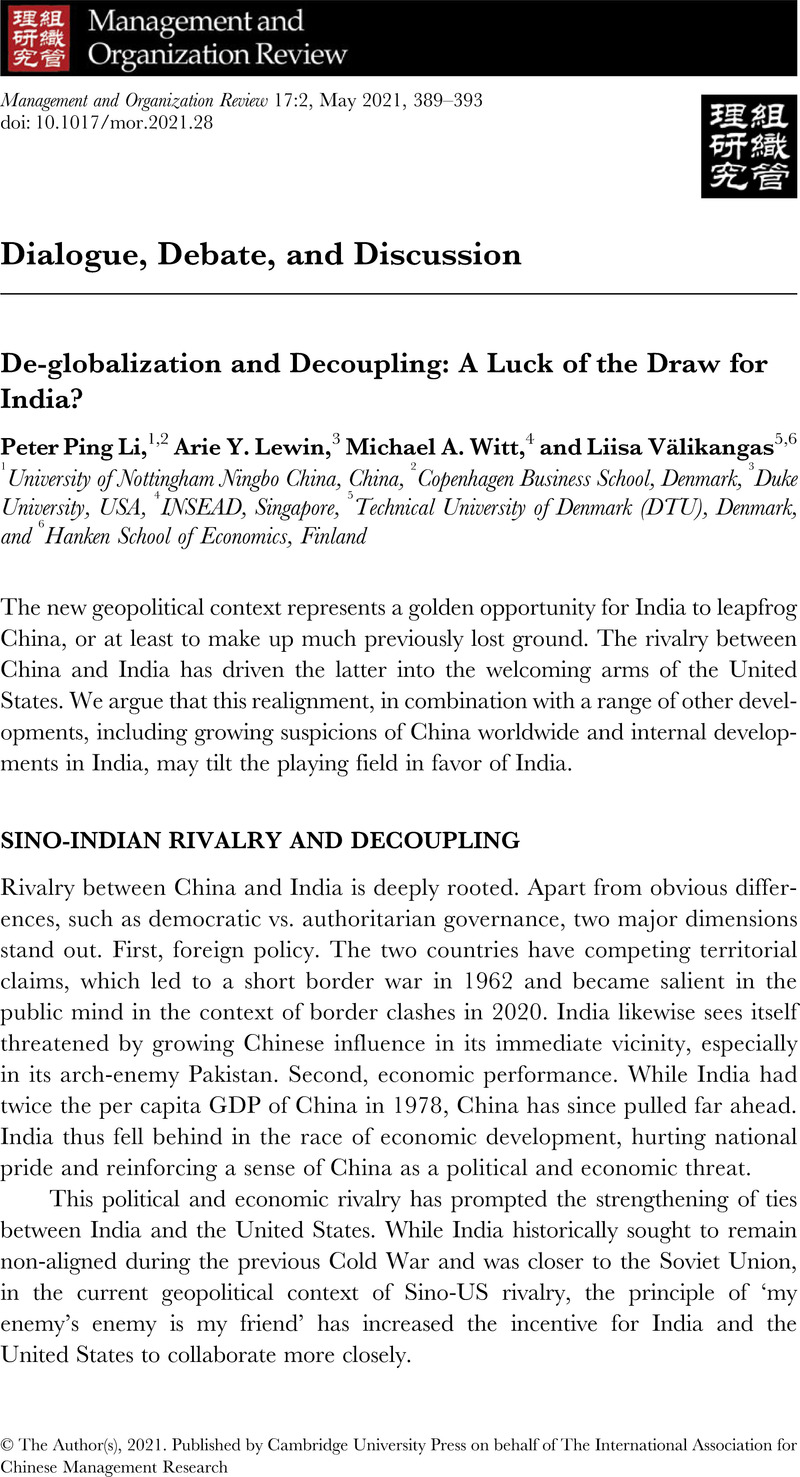Crossref Citations
This article has been cited by the following publications. This list is generated based on data provided by Crossref.
Wang, Liang
and
Xie, Zaiyang
2021.
An Outcome of Decoupling and De-globalization? The Weakened Impact of Internationalization on Innovation of Chinese Firms Since 2016.
Management and Organization Review,
Vol. 17,
Issue. 3,
p.
630.
Meyer, Klaus E.
2022.
India and China: Distinct Paths to Global Businesses.
Management and Organization Review,
Vol. 18,
Issue. 6,
p.
1235.
Xie, Zhenzhen
Chen, Xuanjin
and
Wang, Hao
2022.
When Dragon Meets Elephant in Africa: The Rivalry on Distinctive Competitiveness.
Management and Organization Review,
Vol. 18,
Issue. 6,
p.
1228.
Witt, Michael A.
Lewin, Arie Y.
Li, Peter Ping
and
Gaur, Ajai
2023.
Decoupling in international business: Evidence, drivers, impact, and implications for IB research.
Journal of World Business,
Vol. 58,
Issue. 1,
p.
101399.
Wong, Pauline
Ip, Po Keung
Barnes, Bradley R.
and
Whitla, Paul A.
2024.
A ‘Hidden Champion’ in Hong Kong’s banking sector: the case of Hang Seng Bank.
Asia Pacific Business Review,
p.
1.
Huang, Dongdong
Tsui-Auch, Lai Si
Dieleman, Marleen
and
Gomulya, David
2024.
Politically connected EMNCs in a (de)globalising world: A review and future research directions.
International Business Review,
Vol. 33,
Issue. 3,
p.
102196.
Pillich, Sidney Michael
2024.
De-internationalization of cross-border investments from a de-globalization perspective: a systematic literature review and structuring of the field.
Management Review Quarterly,
Imran-ur-Rahman, Imran-ur-Rahman
Shafi, Mohsin
Fauzi, Muhammad Ashraf
and
Fetuu, Enitilina
2024.
Examining trade flow dynamics in the face of deglobalization and decoupling: a comparative analysis of developing and developed nations.
Kybernetes,



